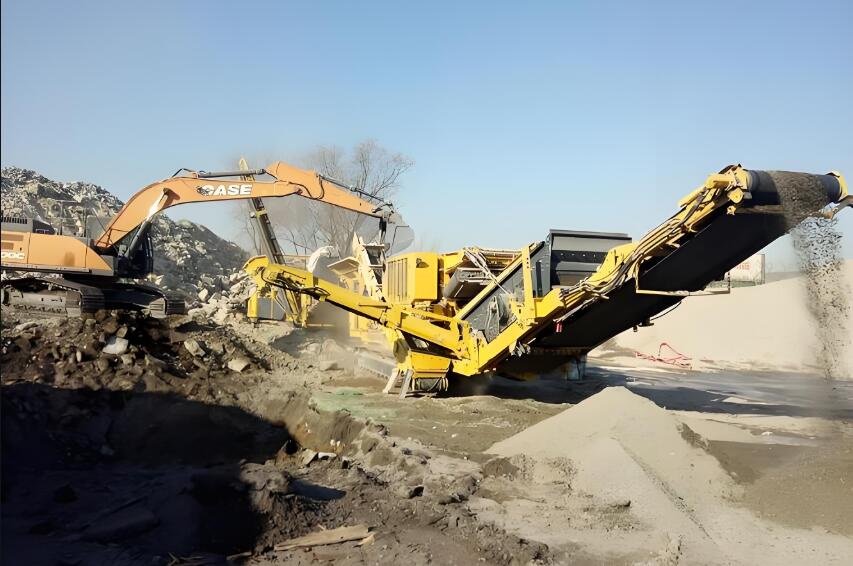Recycling of stale household waste
Stale garbage refers to the product of long-term natural evolution of garbage after landfill treatment. After long-term microbial fermentation and decomposition, stale garbage has a high moisture content and a low organic matter content. If it is dug out and incinerated, it needs to be screened and sorted first, and the sorted combustibles are used for garbage incineration. Other garbage is composted and landfilled according to specific classification. Stale garbage can be classified into the following types: humus, plastic film, hard plastic (can be divided into multiple types of plastics), rubber, magnets, non-ferrous metals, construction waste bricks and tiles, waste glass, wood, textiles and combustibles. Then they are effectively recycled and processed separately to make these garbage into commodities that the market can accept again, promoting the recycling of materials.
Recycling construction waste
JHT construction waste recycling and processing equipment can easily and quickly realize the crushing, screening and impurity removal of construction waste. The sorted construction waste passes through a specific iron removal device to remove the iron substances contained in it, and then is crushed by coarse crushing, medium crushing, and even fine crushing equipment to be processed into recycled sand and gravel aggregates of a certain particle size, which can be used for roadbed stones, unburned bricks, cement admixtures, etc.
Crushing and screening of concrete fragments, asphalt blocks, bricks, stones, wood, plastics, plaster and mortar, steel and non-metals, etc.
Waste Electrical & Electronic Equipment
Millions of tons of e-waste are generated worldwide every year, and the number of discarded devices is constantly increasing. Mobile phones, TVs, computers and washing machines contain a lot of valuable materials and are in high demand.
When processing electrical and electronic waste, the goal is to obtain secondary raw materials that are as pure as possible, marketable and free of hazardous substances. At the beginning of the process, the waste needs to be broken down. JHT recycling technology is ideally suited to this job.
JHT offers single machines for special process steps and complete systems for recycling e-waste, ranging from small household appliances to entire photovoltaic systems.
Recycling of raw materials for lithium-ion batteries
Fossil fuels should gradually be replaced by other energy carriers. As a storage medium for renewable energy, the production of batteries and rechargeable batteries is constantly increasing. Therefore, there is also a greater need for economical recycling methods. The related climate debate, increasing environmental awareness, high gasoline prices, and emission scandals have made electric vehicles increasingly popular - but what should be done when the raw materials used to produce electric vehicle batteries run out? And where will the old battery be placed?
JHT provides an efficient and safe process for the environmentally friendly and safe recycling of batteries and batteries, as well as the recycling of raw materials such as copper, lithium, nickel, cobalt, or manganese.
From the beginning of the industrialisation period and to the continuing expansion in world population, the issue relative to waste generation has become a constantly growing environmental issue.Waste materials vary greatly, and the subsequent impact of each type of waste on environmental toxicity requires a case by case approach.As natural resources are depleting and climate change by gas emissions and environmental contaminations are increasing, MEKA is focusing on integrated recycling technologies to recycle waste materials in construction materials with promising results.




